Beginning the journey into the spirit world
In this section:
- Etuaptmumk/two-eyed seeing
- Decolonization in palliative and end-of-life care
- Palliative and end-of-life care across the generations
- Gender- and 2SLGBTQQIA+-informed palliative and end-of-life care
- Trauma-informed palliative and end-of-life care
- Resilience-informed palliative and end-of-life care
- Relationships and allyship
Based on the 2016 work of Drs. Gloria Snively and Wanosts’a7 Lorna Williams, Knowing home: Braiding Indigenous science with Western science, this metaphor describes how Indigenous and non-Indigenous ways of knowing can be used in a way that is mutually respectful and reciprocal.
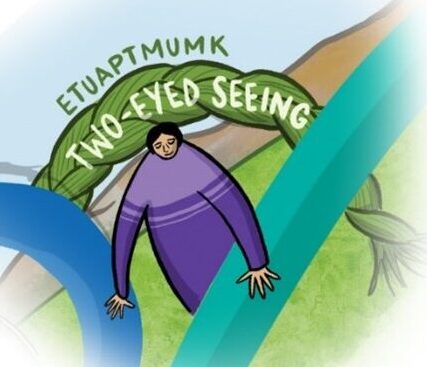 In this context, braiding palliative and end-of-life care can include the use of the following: Etuaptmumk/two-eyed seeing, care across the generations, gender- and 2SLGBTQQIA+-informed care, trauma-informed care, resilience-informed care, relationships and allyship.
In this context, braiding palliative and end-of-life care can include the use of the following: Etuaptmumk/two-eyed seeing, care across the generations, gender- and 2SLGBTQQIA+-informed care, trauma-informed care, resilience-informed care, relationships and allyship.
Etuaptmumk/two-eyed seeing1
Mi’kmaw Nation Elder Albert Marshall specifies that Etuaptmumk/two-eyed seeing is the gift of multiple perspectives treasured by many Indigenous Peoples. Etuaptmumk/two-eyed seeing supports an important shift in dialogue and reconciliation about integrative, cross-cultural and collaborative work between Indigenous and non-Indigenous peoples in Canada. As Elder Marshall further explains, Etuaptmumk/two-eyed seeing refers to learning to see from one eye with the strengths of Indigenous knowledges and ways of knowing, and from the other eye with the strengths of Western knowledges and ways of knowing…and learning to use both these eyes together, for the benefit of all.2,3
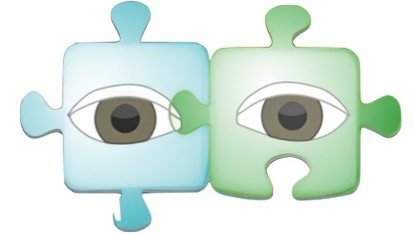
Etuaptmumk/two-eyed seeing. Credit: Collaborative work by the research team of the Canada Research Chair in Integrative Science and Mi’kmaw Elders in Unama’ki/Cape Breton.
For more information about Etuaptmumk/two-eyed seeing,
- watch the following video: Two eyed Seeing
- visit the Integrative Science website: Bringing together Indigenous ways of knowing and Western scientific knowledge
In relation to palliative and end-of-life care, readers are invited to explore ways to bridge Indigenous ways of knowing and biomedical ways of knowing by using the strengths of these worldviews and approaches to aid people living with life-limiting illnesses, their families and communities.
Two examples of braiding are:
- improving access and accessibility to both traditional Indigenous healing and biomedical palliative and end-of-life care services close to home4
- having healthcare settings (for example, hospitals, care facilities) that are responsive to cross-cultural needs by harmonizing the needs and values of people with life-limiting illnesses from a wide range of communities. The rights and cultural values of these people and their families are balanced with the hospital’s commitment to provide optimal care for all people with life-limiting illnesses in its treatment areas5
Promising practice: Nunavik Regional Board of Health and Social Services IQI model
Through a collaborative process, the Nunavik Regional Board of Health and Social Services and Nunavimmiut co-developed the IQI (Ilusirsusiarniq, Qanuingngisiarniq, Inuuqatigiitsianiq) model. The IQI model is based on Inuit ways of knowing which integrates data from the 2017 Qanuilirpita health survey (community-health component) to inform culturally congruent and culturally safer community health program development and implementation.6
Ilusirsusiarniq generally relates to the body; Qanuinngisiarniq includes feelings of being comfortable, content and without worries or pain; and Inuuqatigiitsianiq pertains to harmonious relations among people who share a place. As a collective, Ilusirsusiarniq, Qanuingngisiarniq and Inuuqatigiitsianiq are central dimensions to Inuit health at the individual, family and community levels. Based on these dimensions, the IQI model serves as a framework for informed health decision-making and culturally safer access to resources that are rooted in culture and language.7
Promising practice: Pallium Canada—Learning Essential Approaches to Palliative Care (LEAP)
The goal of LEAP is to train healthcare professionals on the essential skills and knowledge in providing palliative care. LEAP offers foundational, competency- and evidence-based interprofessional accredited courses that provide healthcare professionals with an essential set of knowledge, attitudes and skills on the palliative care approach.
Since 2004, Pallium Canada has been working with Indigenous leaders and health professionals to integrate their learning and wisdom into Pallium’s educational resources.
For more information about LEAP courses, visit Pallium.
Decolonization in palliative and end-of-life care
What is decolonization?
Decolonization is the process of undoing colonizing practices.
In a healthcare context, this means confronting and challenging colonizing practices that have influenced health care in the past and which are still present today. This often involves reflecting on the structure of healthcare institutions and their role in the broader society.
In the spirit of decolonizing, access to palliative and end-of-life care for Indigenous Peoples across Canada can benefit from transformative changes by re-thinking how service delivery is carried out with and alongside Indigenous Peoples—meeting individual and community needs, ways of being and knowing.
When advancing a decolonization process, it is important to confront the power relations in healthcare settings and related institutions.
Reflection questions are, Who is in control of ways of knowing? What is their role(s)? How did they gain this role(s)? What maintains their power?
In 2020, the British Columbia (BC) Minister of Health commissioned an independent review of Indigenous-specific racism and discrimination in the provincial healthcare system. As the Independent Reviewer, Hon. Dr. Mary-Ellen Turpel-Lafond (Aki-Kwe; Muskeg Lake Cree Nation) outlined 24 recommendations that focused on decolonizing the healthcare system in BC—which includes enhancing systemic coordination and braiding Indigenous human rights (as defined in the United Nations Declaration on the Rights of Indigenous Peoples) into the provincial healthcare system to improve Indigenous Peoples’ access to timely care.
For more information about this independent review, read In plain sight: Addressing Indigenous-specific racism and discrimination in BC health care summary report.
The Truth and Reconciliation Commission of Canada reports remind us that residential schools and related colonial practices (e.g., Indian Act legislation and the reserve system, land appropriation, Indian hospitals, Sixties Scoop) were specifically designed to colonize the mind, the heart and the spirit. At present, colonialism is more subtle and is often perpetuated through curricula, power relations and institutional structures.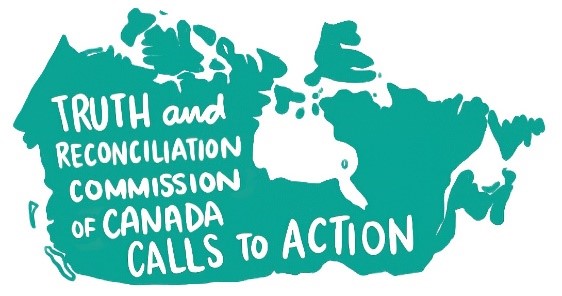
Palliative and end-of-life care across the generations
Life-limiting illnesses and death in crisis can occur at any age across the lifespan and the generations.

More often than not, discussions and initiatives pertaining to palliative and end-of-life care focus on seniors and Elders living with life-limiting illnesses. Therefore, readers are invited to frame palliative and end-of-life care from a lifespan development and generational perspective.
What does a lifespan and generational perspective mean?
When readers take a lifespan and generational perspective, they view palliative and end-of-life care based on biological, psychological and social factors and consider that all parts of the life span are interrelated.
There is further recognition that
- development is holistic and a lifelong process,
- development involves gains and losses,
- development involves changing allocation of resources,
- development shows plasticity, and
- development is influenced by historical and cultural8 context as well as shared across the generations.
People often experience a lot of fear around illness, dying, death and loss. Limited harmonization of cultural practices and ways of knowing such as Indigenous languages and cultural knowledge in biomedical-oriented healthcare services often contributes to communication and decision-making challenges, cross-cultural misunderstandings and value conflicts. These challenges and conflicts may alienate Indigenous Peoples from accessing these healthcare services.9,10 This alienation can manifest in cultural and social isolation.11,12,13 Racism, active stereotyping and other colonial healthcare values also contribute to cultural isolation.14
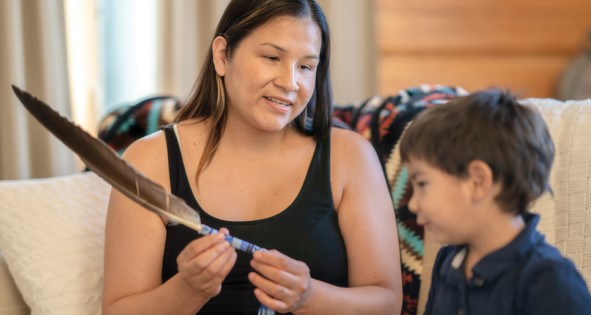 While relatively few children die of cancer, the needs of children are often complicated and may begin as early as birth and extend over the lifespan of the child. Families may spend extended periods away from their communities when children have life-limiting illnesses. Pediatric palliative care is different from adult palliative care. Indigenous communities can provide important support and resources for families with children with life-limiting illnesses.
While relatively few children die of cancer, the needs of children are often complicated and may begin as early as birth and extend over the lifespan of the child. Families may spend extended periods away from their communities when children have life-limiting illnesses. Pediatric palliative care is different from adult palliative care. Indigenous communities can provide important support and resources for families with children with life-limiting illnesses.
Gender- and 2SLGBTQQIA+-informed palliative and end-of-life care
In taking a gender- and 2SLGBTQQIA+-informed approach, readers commit to assessing the potential impacts of palliative and end-of-life care policies, programs, services and other initiatives on people with diverse gender identities.
 People in the 2SLGBTQQIA+ community often face hostility and discrimination in healthcare settings. They are also more likely to face ignorance or outright prejudice. Furthermore, fear of poor treatment in institutional healthcare settings can drive many people from the 2SLGBTQQIA+ community away from accessing timely and effective palliative and end-of-life care.
People in the 2SLGBTQQIA+ community often face hostility and discrimination in healthcare settings. They are also more likely to face ignorance or outright prejudice. Furthermore, fear of poor treatment in institutional healthcare settings can drive many people from the 2SLGBTQQIA+ community away from accessing timely and effective palliative and end-of-life care.
The terms “men” and “women” are intended to include individuals identifying in this way, recognizing that not all people who identify as men/women were born with or have male/female anatomy. These terms may not be inclusive of all individuals that are nonbinary, agender, gender fluid or two-spirited.
Women can suffer from discrimination in the form of misogyny, stereotypes and expected gender roles. Individuals born with female anatomy can experience stigma and ostracism surrounding life-limiting illnesses such as cervical and breast cancers that can make them reluctant to seek palliative care. Also, certain cultural contexts (for example, being an Indigenous female) may further limit access to timely palliative and end-of-life care.
Men can also face the negative effects of gender discrimination and societal and cultural taboos. Social norms surrounding masculinity may make some men less willing to discuss health concerns and consider certain life-saving procedures for those with male anatomy such as surgery for early-stage prostate cancer and testicular cancer due to the fear of side effects such as incontinence or impotence.
Promising practices: Gender- and 2SLGBTQQIA+-informed palliative and end-of-life care resources
- 2SLGBTQ+ Canadian Health Care Bill of Rights
- The human rights of lesbian, gay, bisexual, transgender, queer, 2-spirit and intersex persons
- Inclusive care (Canadian Virtual Hospice)
- My Choices for Safe an Inclusive Health Care
- Planning for my care: For People who identify as Two-Spirit and LGBTQ+
- Two-Spirit resources
Trauma-informed palliative and end-of-life care
Trauma is an extremely upsetting event or set of events that overwhelm one’s internal resources and produce lasting psychological symptoms (for example, freezing, dissociating, hyperventilating, panicking and having intense physical sensations).15,16 Trauma impacts people in various ways, from heightening their concerns about personal safety to reducing their capacity for managing stressful situations.
Trauma experienced by some Indigenous Peoples may lead to feelings of distrust of the biomedical health care system and institutional settings, resulting in individuals with life-limiting illnesses and their families being less likely to access palliative and end-of-life care.
Trauma-informed palliative and end-of-life care recognizes the prevalence of trauma and how trauma affects individuals, families and communities. By helping people with life-limiting illnesses to self-soothe and regulate their emotions, helpers and healers in the palliative and end-of-life care field can help them to move away from these dysregulated states and towards their window of tolerance.17
The window of tolerance is a state of being where people are able to think clearly and feel relatively calm, safer and energized.18
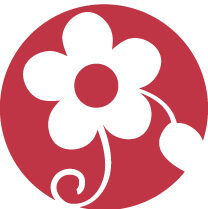
By using a trauma-informed palliative and end-of-life care approach, helpers and healers can assist people with life-limiting illnesses move into and expand their window of tolerance through bottom-up and top-down processing. Bottom-up processing involves working with the emotions and defence systems of people with life-limiting illnesses through body modification work, while top-down processing focuses on shifting thought patterns for people with life-limiting illnesses.19
In the End-of-life care for Inuit living in Nunavik, Quebec (2016) report, research participants spoke of two types of traumatic forms of grief that can accumulate and potentially interfere with bereavement experiences of individuals providing palliative and end-of-life care:
- intergenerational trauma related to historical experiences of loss; and
- personal grief related to the experience(s) of death in crisis by loved ones.20
For more information about intergenerational trauma and death in crisis, refer to the full downloadable report, Beginning the journey into the spirit world: First Nations, Inuit and Métis approaches to palliative and end-of-life care in Canada.
Resilience-informed palliative and end-of-life care
A resilience-informed approach is guided by ethical values of respect, inclusion, truth telling, wisdom and belonging.
 To reflect a resilience-informed palliative and end-of-life care approach, it would be beneficial for policies and practices to be based upon shared values, foundations and processes. These values, foundations and processes include being culturally safer, trauma- and resilience-informed and inclusive of Indigenous identity (for example, Indigenous languages, cultures, values, beliefs, traditions and practices, worldviews and knowledge).21
To reflect a resilience-informed palliative and end-of-life care approach, it would be beneficial for policies and practices to be based upon shared values, foundations and processes. These values, foundations and processes include being culturally safer, trauma- and resilience-informed and inclusive of Indigenous identity (for example, Indigenous languages, cultures, values, beliefs, traditions and practices, worldviews and knowledge).21
Relationships and allyship
Relationships and allyship dovetail with social justice in Indigenous approaches to palliative and end-of-life care. Concepts of justice play a profound role in clarifying human needs in palliative and end-of-life care. Social issues such as inequality, poverty and discrimination pose a constant challenge to policies and practices that serve the health and income needs of children, families, people from the 2SLGBTQQIA+ community, people with disabilities, the elderly and Indigenous Peoples.
What is allyship?
Allyship is an active, consistent and challenging practice of unlearning and re-evaluating, in which a person in a position of privilege and power seeks to operate in solidarity with marginalized group(s).22
Part of the decolonization process in healthcare settings is learning how to be an ally and to work in solidarity with one another.
For more information about allyship, visit the ally section from the Anti-Oppression Network.
There is an opportunity to advocate for social justice and social change—promoting equity and human rights for individuals and societies through action, education, consciousness-raising and advocacy.
As these social justice competencies are gaining more prominence in healthcare professionals’ standards of practice, relationships, allyship, diversity and inclusion bring much needed knowledge, skills and abilities in being an advocate for people with life-limiting illnesses in systems, particularly in health care.
Using the Etuaptmumk/two-eyed seeing approach, palliative and end-of-life care can be proactively, respectfully and thoughtfully braided together based on the strengths from Indigenous  of knowing and biomedical approaches. This interplay informs readers to support practices, competencies and social justice/diversity/inclusion principles that consider a lifespan and generational perspective, gender- and 2SLGBTQQIA+-informed, trauma-informed, resilience-informed approaches in the theory and practice of palliative and end-of-life care in diverse healthcare settings.
of knowing and biomedical approaches. This interplay informs readers to support practices, competencies and social justice/diversity/inclusion principles that consider a lifespan and generational perspective, gender- and 2SLGBTQQIA+-informed, trauma-informed, resilience-informed approaches in the theory and practice of palliative and end-of-life care in diverse healthcare settings.
1. http://www.integrativescience.ca/Principles/TwoEyedSeeing
2. Ibid.
3. Rowett J. Two-eyed seeing: a research approach and a way of living. Antistasis. 2018;8(1). https://journals.lib.unb.ca/index.php/antistasis/article/view/25740
4. Anderson M, Woticky G. The end of life is an auspicious opportunity for healing: decolonizing death and dying for urban Indigenous People. International Journal of Indigenous Health. 2018;13(2):48–60.
5. Kaufert JM, Putsch RW, Lavallée M. End-of-life decision making among Aboriginal Canadians: interpretation, mediation, and discord in the communication of “bad news.” Journal of Palliative Care. 1999;15(1):31–38.
6. https://nrbhss.ca/sites/default/files/documentations/corporatives/UserPerspective_Report_EN_digital.pdf (p. 24).
7. https://nrbhss.ca/sites/default/files/health_surveys/The_IQI_Model_of_Health_and_Well-Being_summary_en.pdf (p. 1).
8. For example, values, beliefs, customs and skills of a social group. These historical and cultural contexts include the role of spirituality shaping values and beliefs in human development, functioning
and behaviour.
9. McGrath PD, Patton AMS, Olgivie KF, Rayner RD, McGrath ZM, Holewa HA. The case for Aboriginal health workers in palliative care. Australian Health Review. 2007;31(3):430–439.
10. Fruch V, Monture L, Prince H, Kelley ML. Coming home to die: Six Nations of the Grand River Territory develops community-based palliative care. International Journal of Indigenous Health.
2016;11(1):50–74.
11. Cultural isolation for Indigenous Peoples may result from perceptions, values, beliefs, worldviews and communication styles that differ from those of the dominant society.
12. Social isolation encompasses a sense of loneliness due to limited access to Indigenous healers and helpers in healthcare settings as well as the healthcare system as a whole. This isolation includes separation of Indigenous Peoples with life-threatening illnesses from family, community, Elders and Knowledge Carriers.
13. https://www.theglobeandmail.com/canada/article-how-elders-from-nunavut-end-up-in-long-term-care-thousands-of
14. Ibid.
15. Briere JN, Scott C. Principles of trauma therapy: a guide to symptoms, evaluation, and treatment, 2nd ed. SAGE; 2015.
16. Van Der Kolk B. The body keeps the score: brain, mind, and body in the healing of trauma. Penguin Books; 2014.
17. NICABM. How to help a client come back into their window of tolerance with Bessel Van Der Kolk and Ruth Lanius [Video]. YouTube. https://www.youtube.com/watch?v=fmDk4sotWGs&t=9s.
2017, October 31.
18. Ibid.
19. ABM. Brain-based approaches to help clients after trauma (infographic). https://www.nicabm.com/brain-based-approaches-to-help-clients-after-trauma/?itl=homepageinfographics (nd).
20. Hordyk SR, MacDonald, ME, Brassard P. End-of-life care for Inuit living in Nunavik, Quebec: a report written for the Nunavik Regional Board of Health; 2016. p. 77.
21. https://www.fnha.ca/Documents/framework-accord-cadre.pdf
22. https://theantioppressionnetwork.com/allyship

